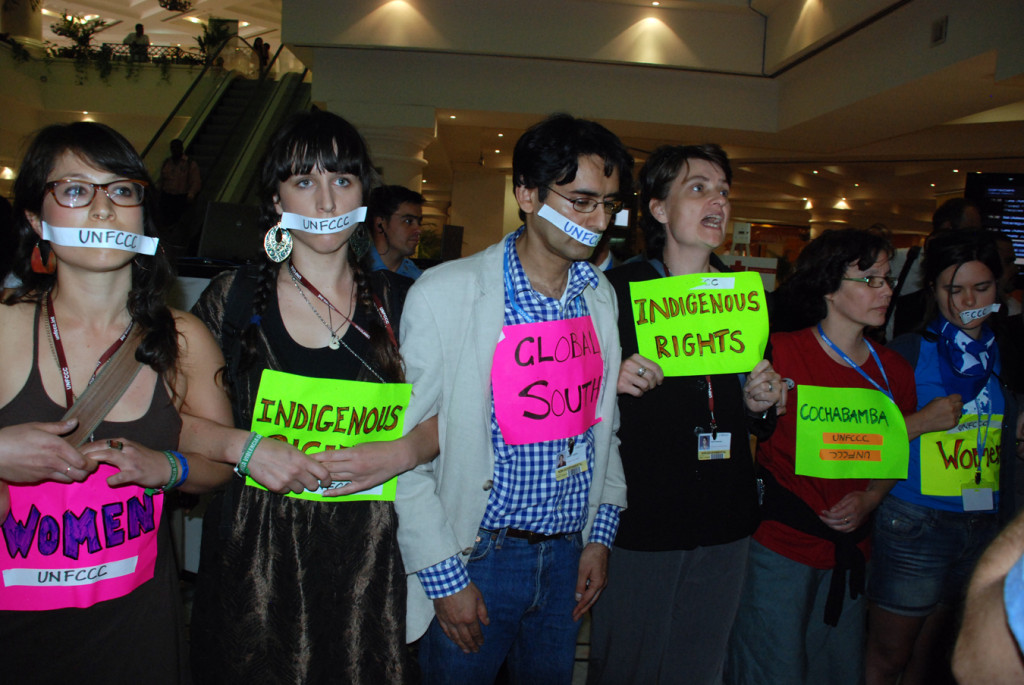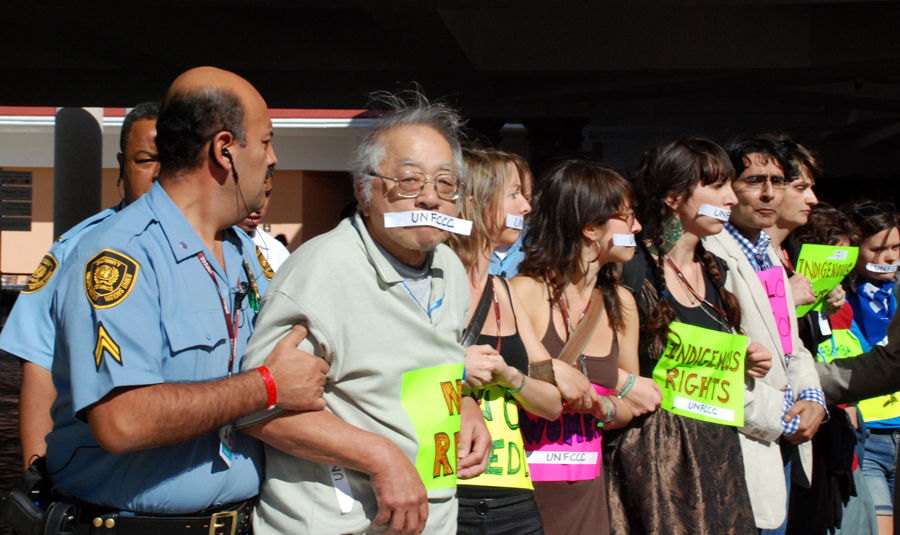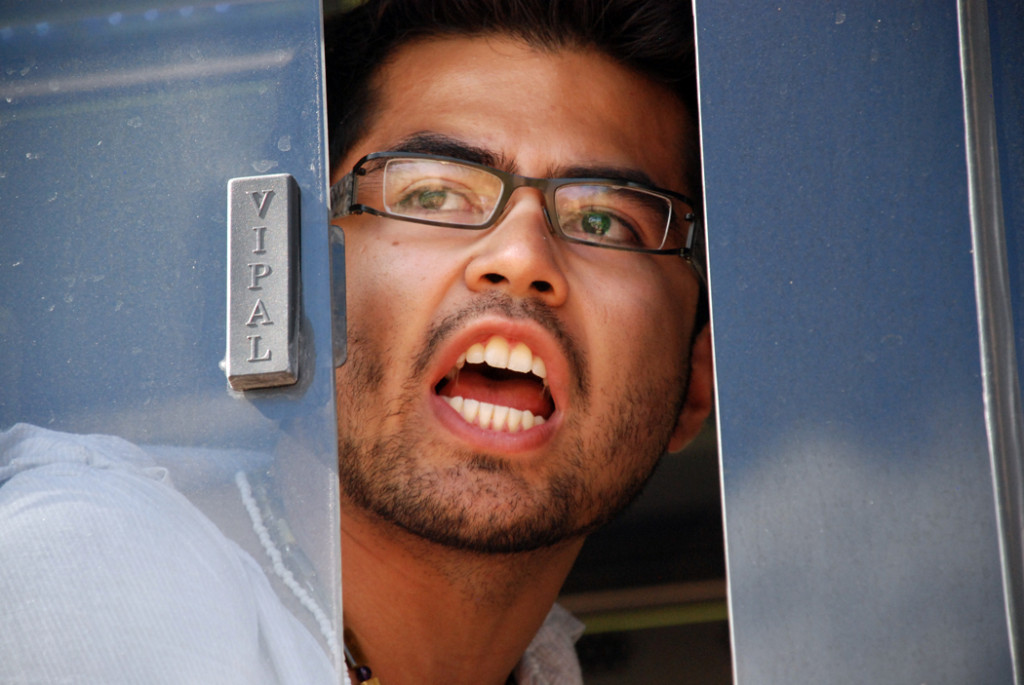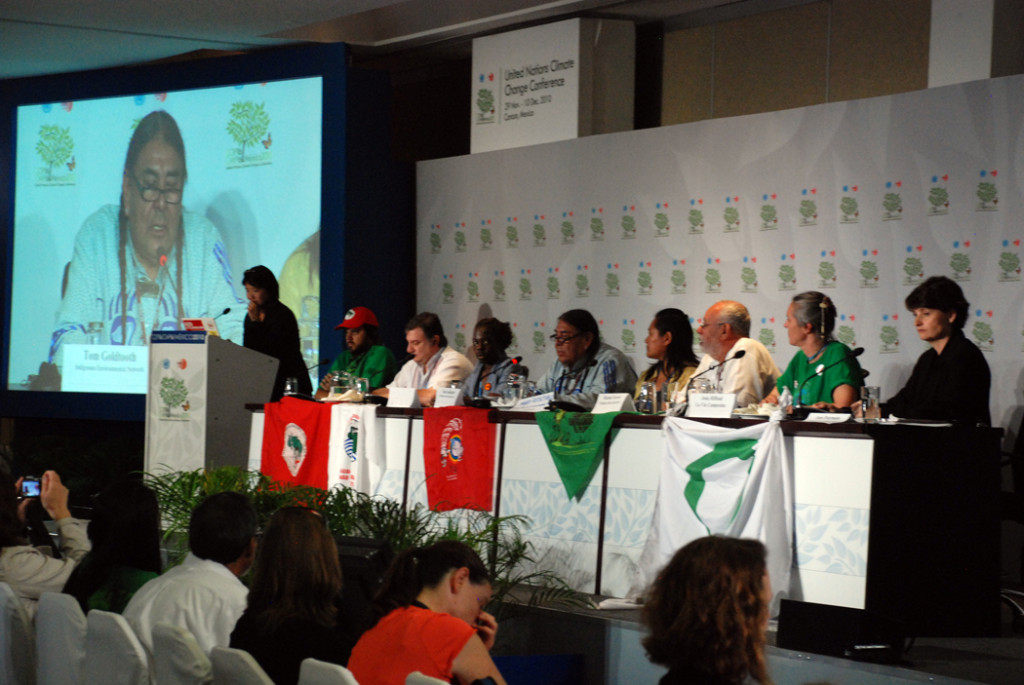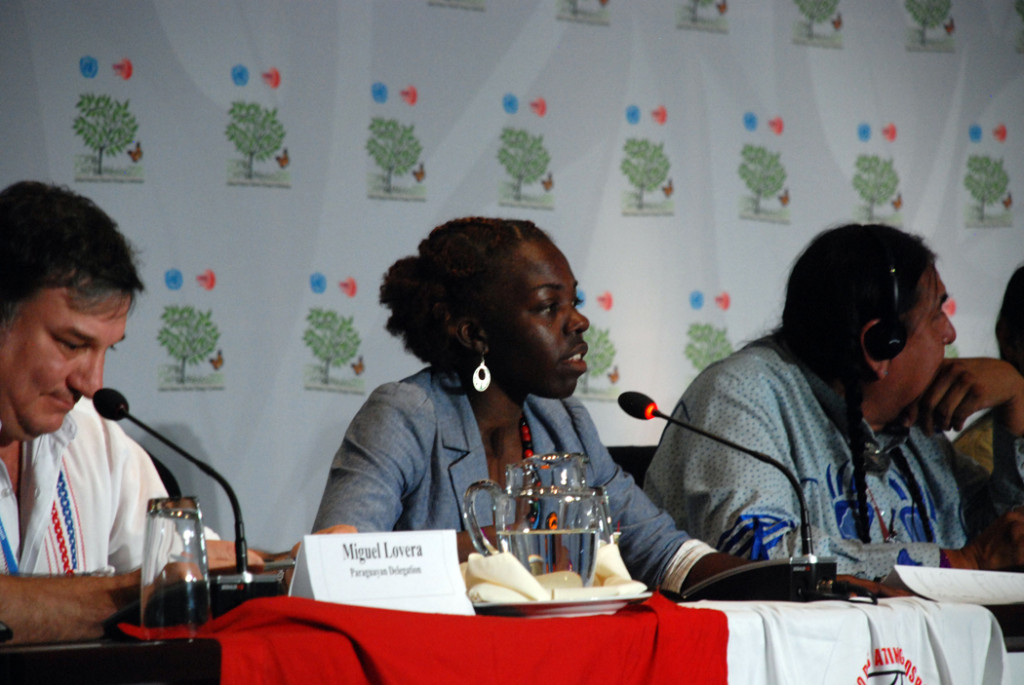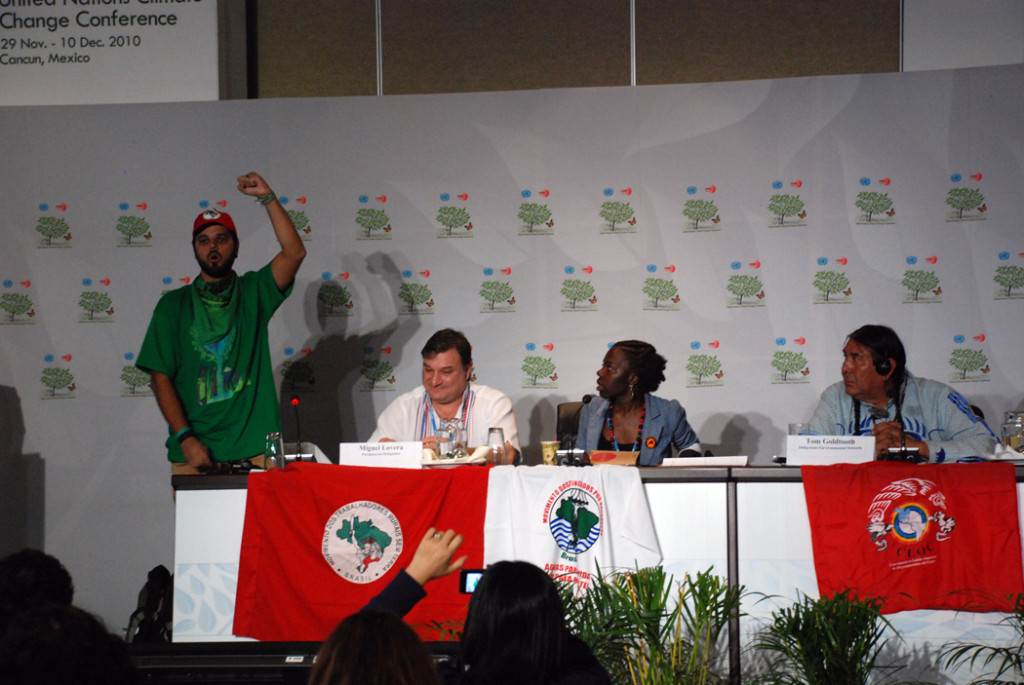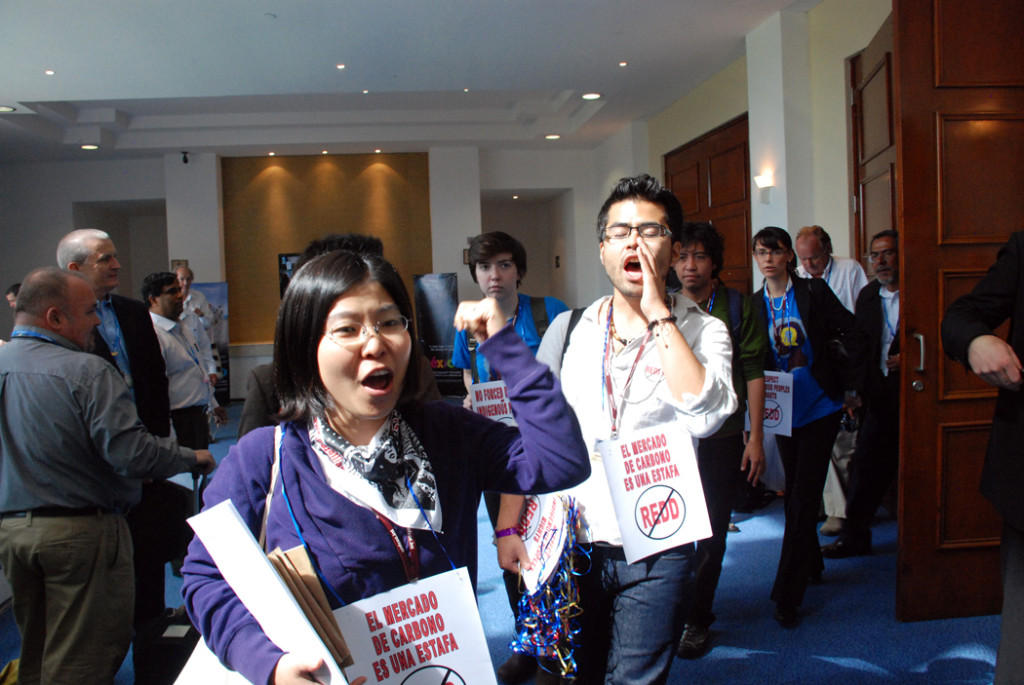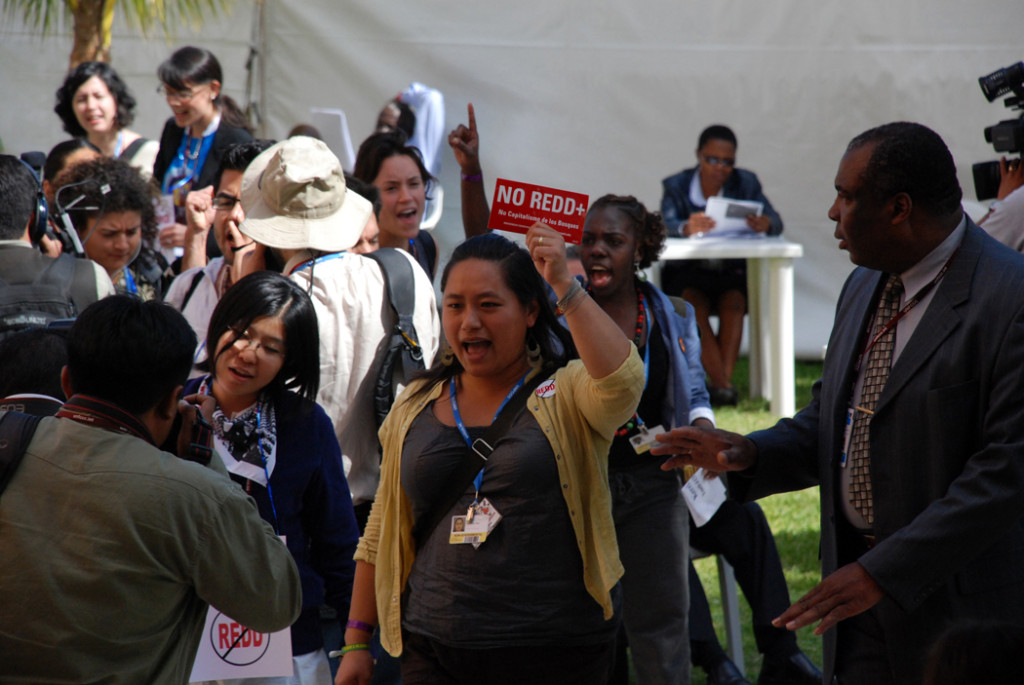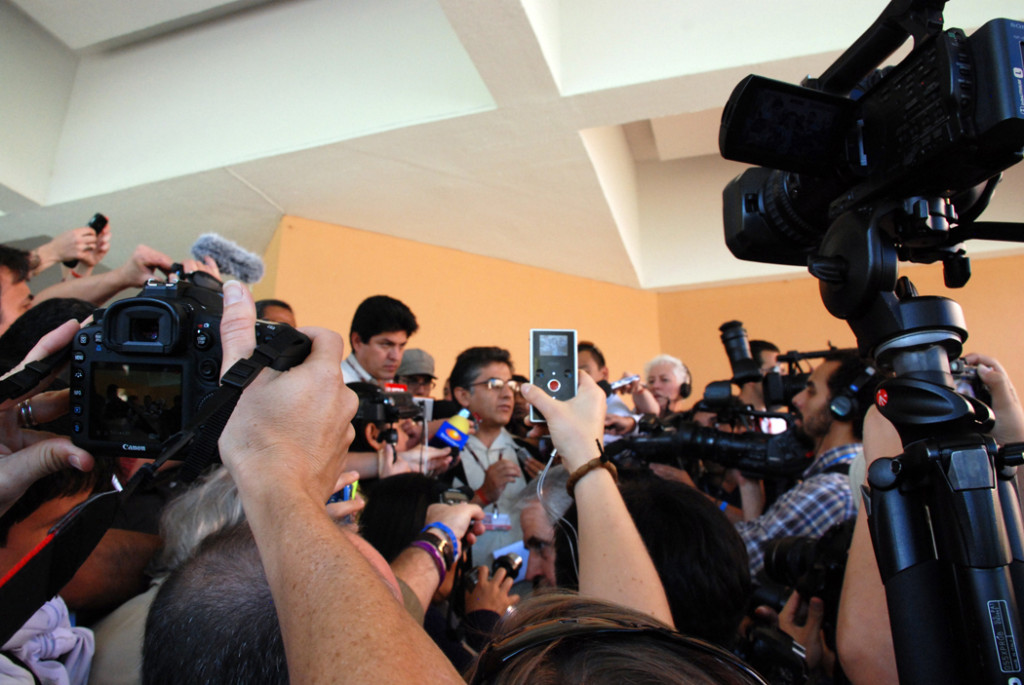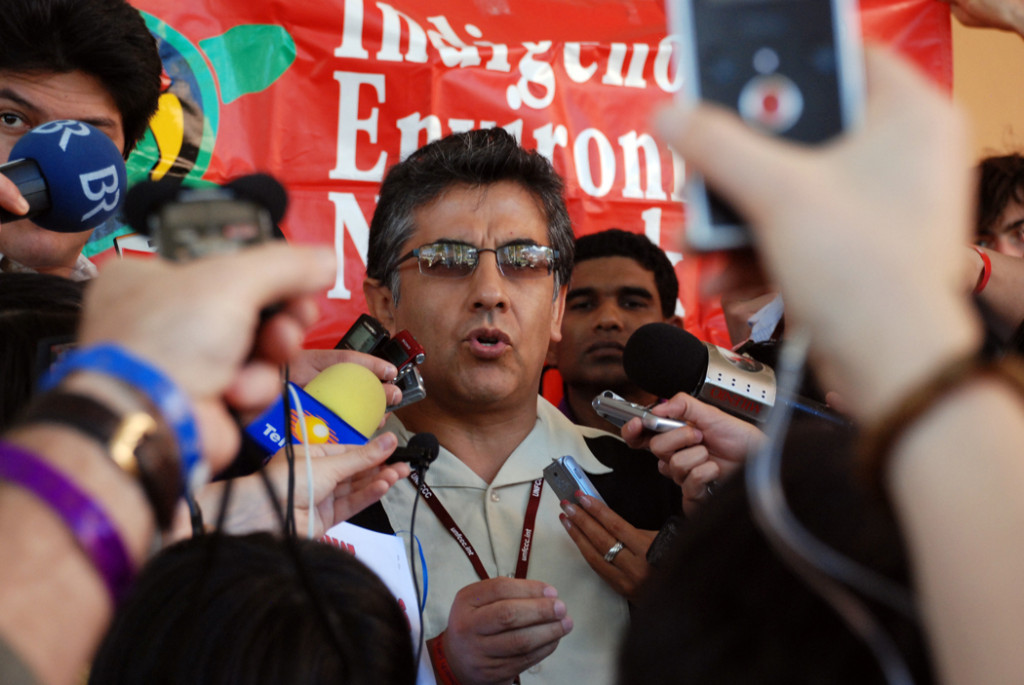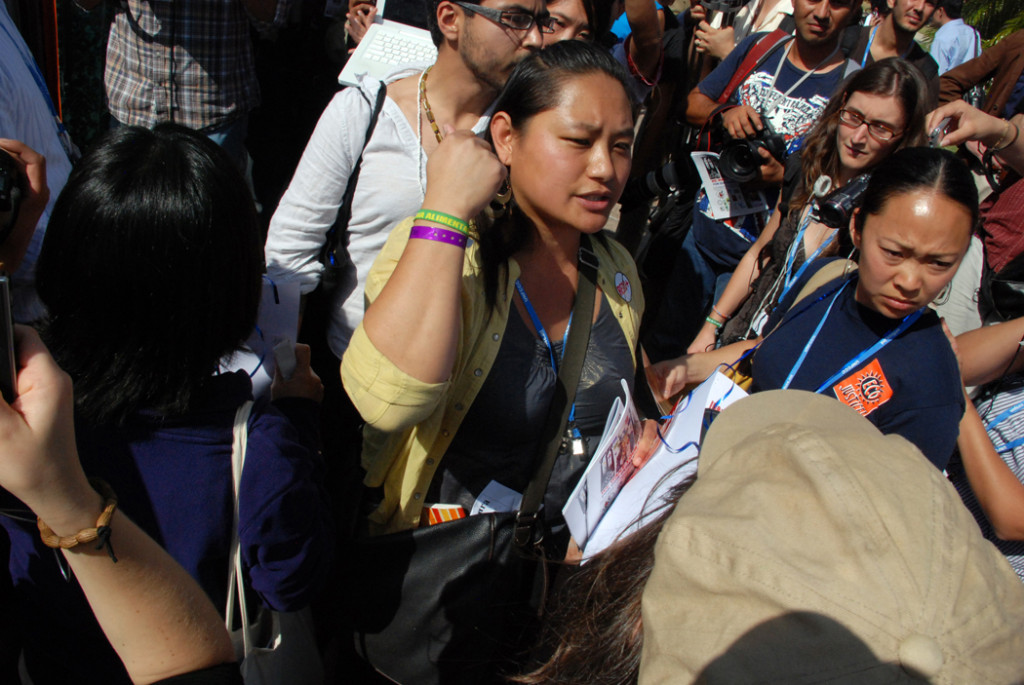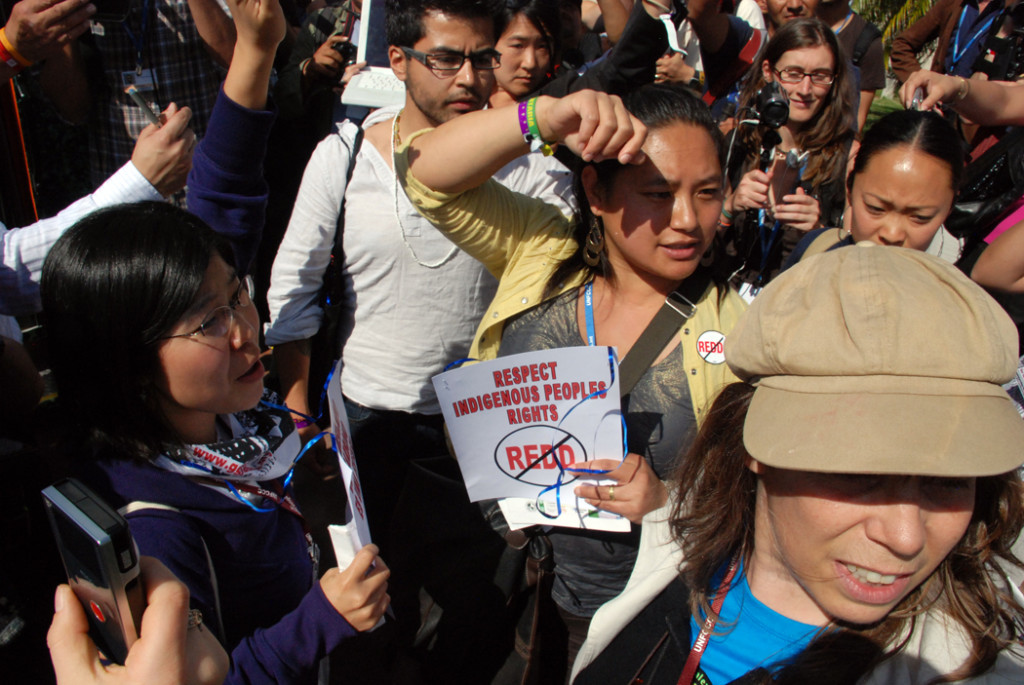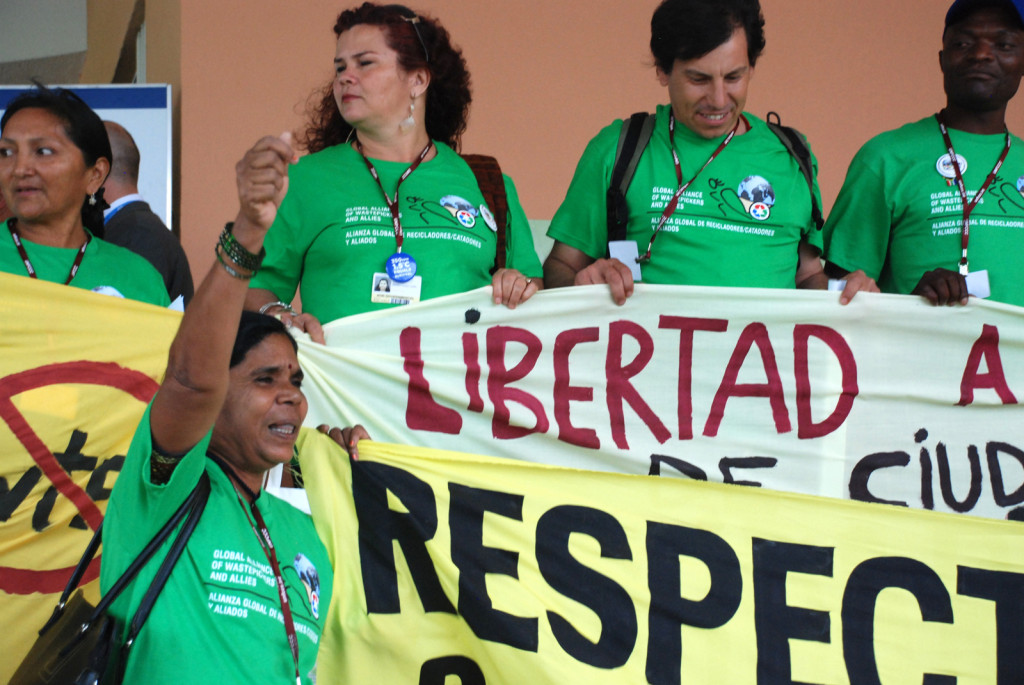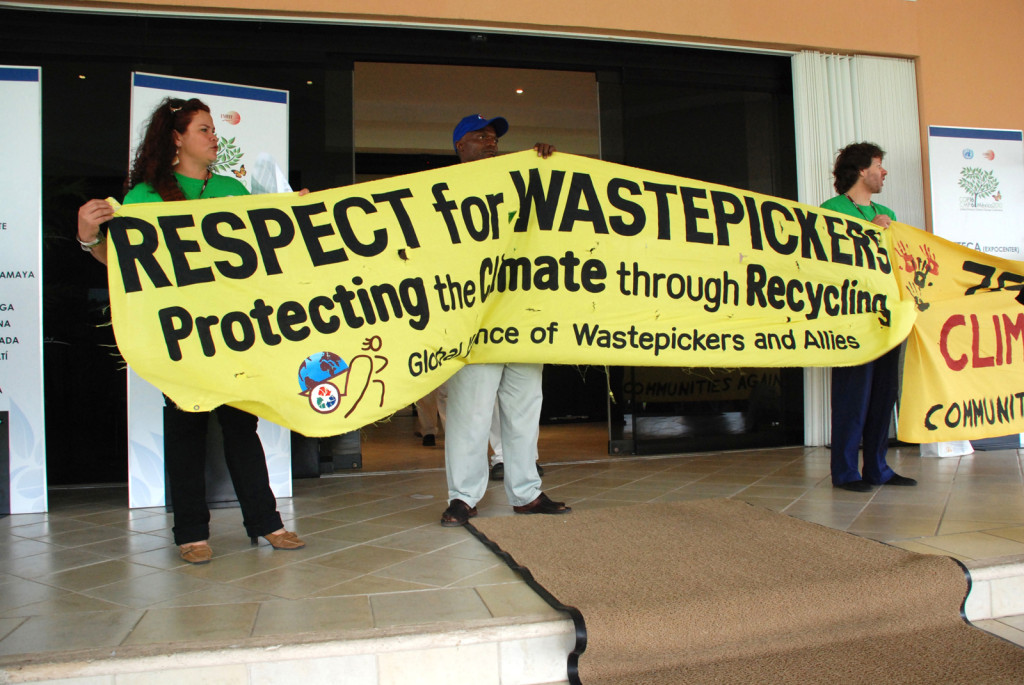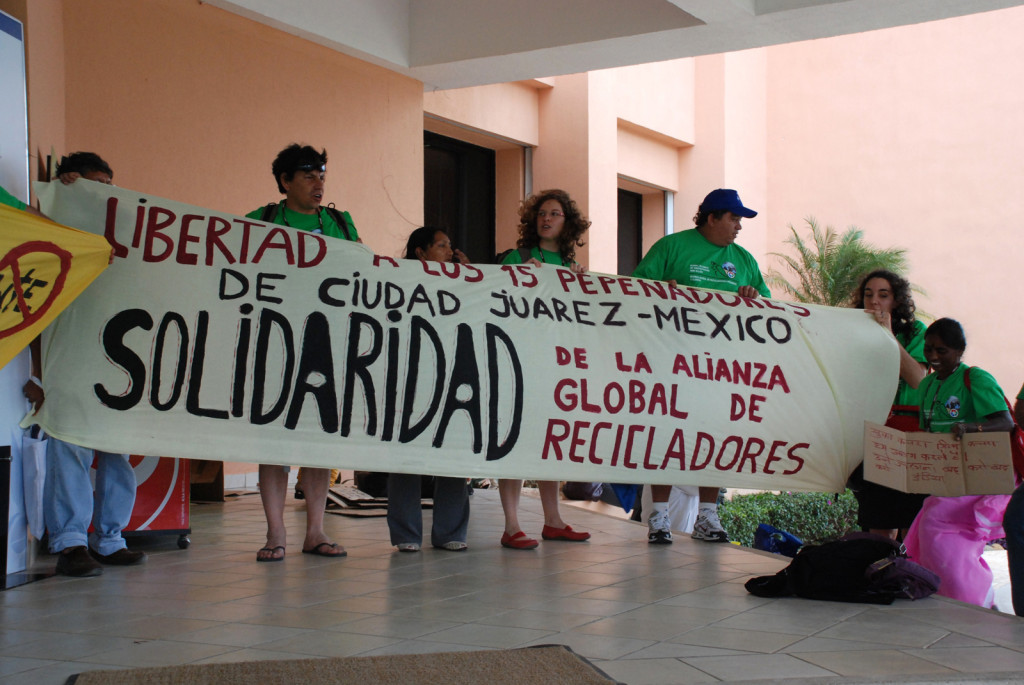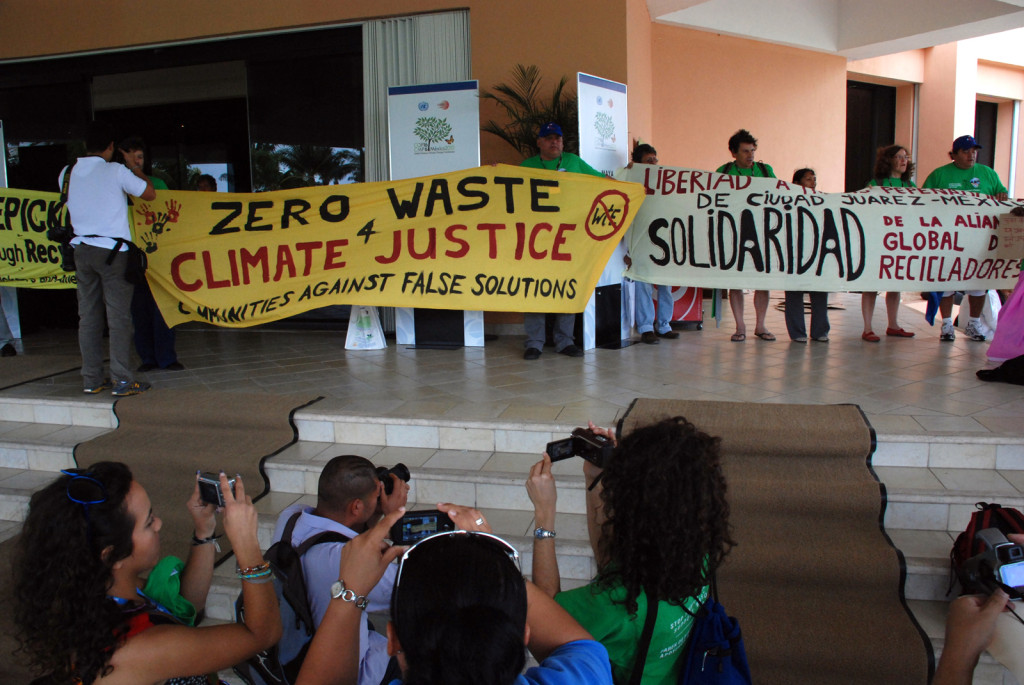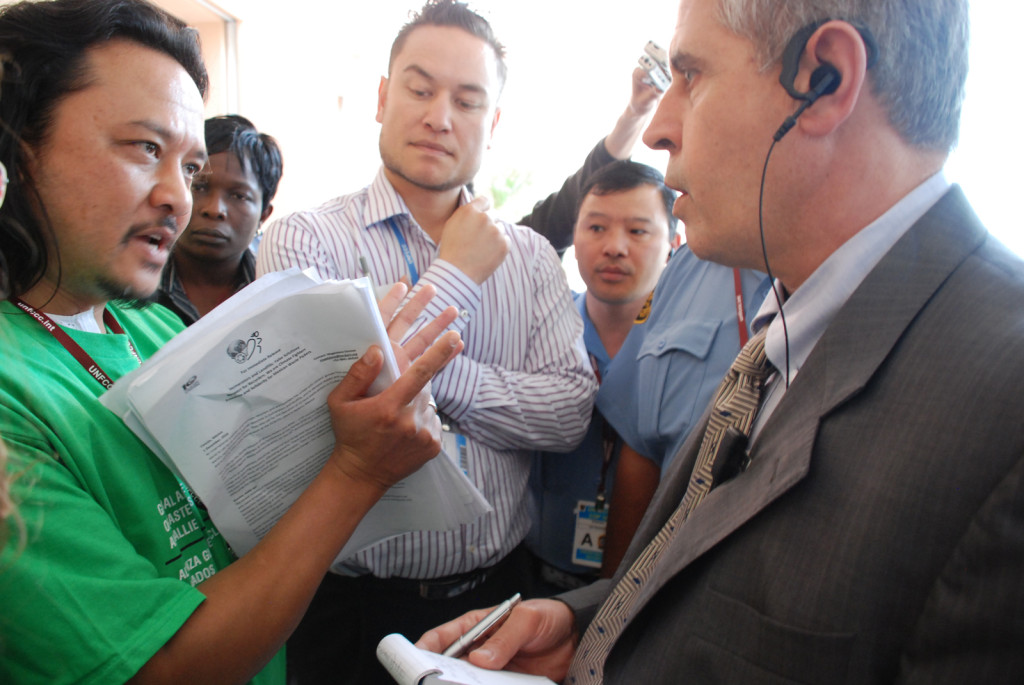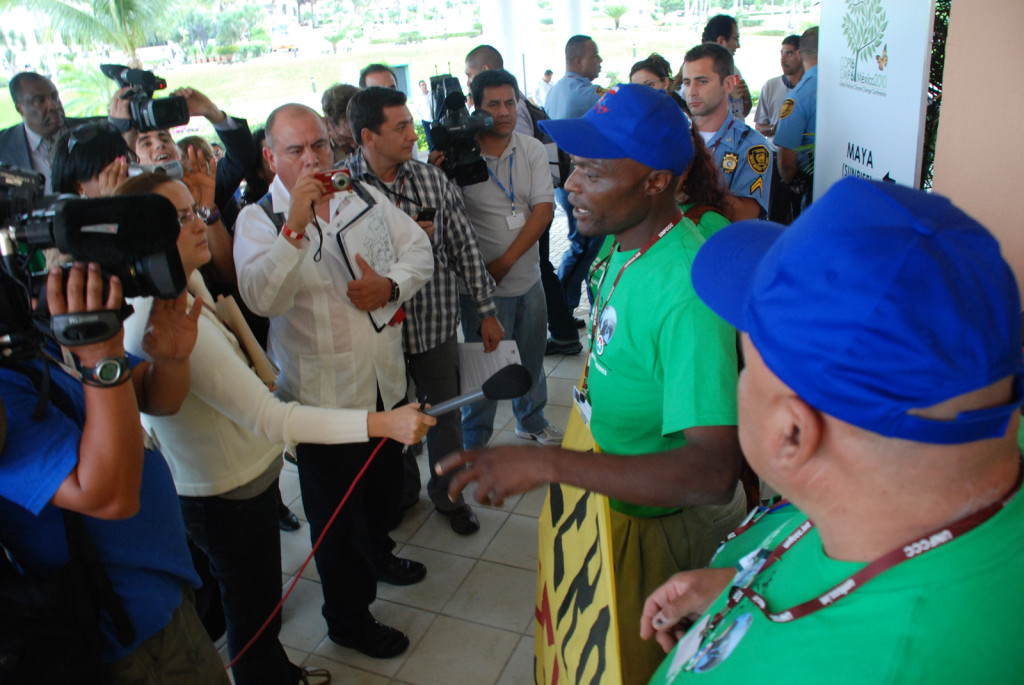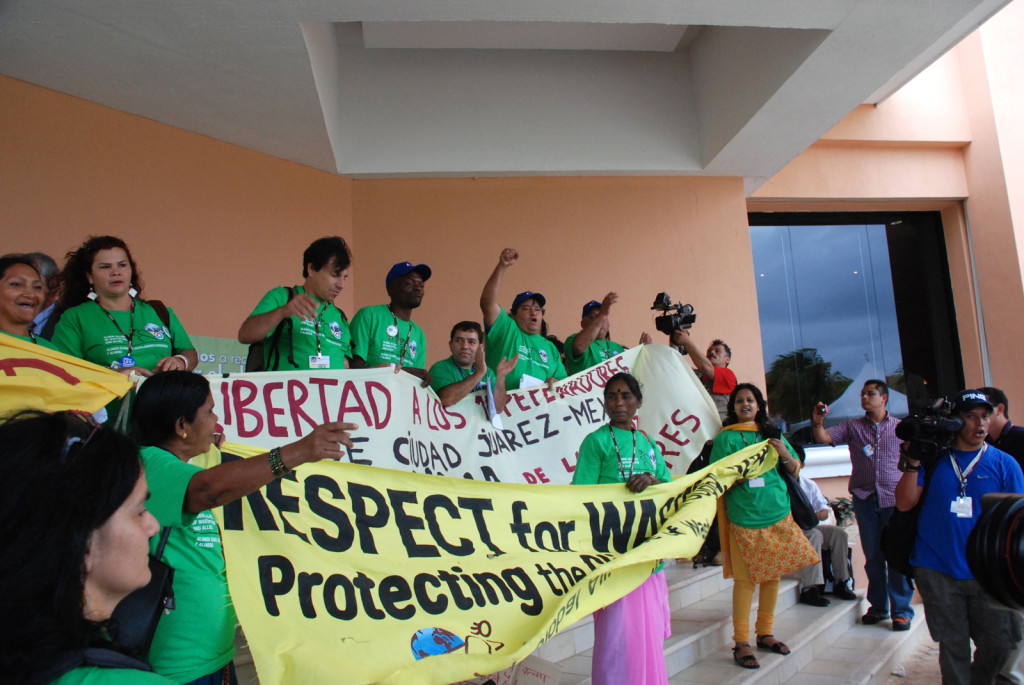Article by GJEP Communications Director Jeff Conant
All Photos by GJEP Co-Director/Strategist Orin Langelle
Cross-Posted from UpsideDown World Friday, 13 May 2011 12:25
The “Sustainable Rural City” Project of Santiago el Pinar
Chiapas, Mexico’s poorest state, with the country’s largest indigenous population, has always been extremely vulnerable to volatile climate events. High levels of hunger and marginalization are exacerbated almost annually by torrential rain and flooding, which can only be expected to get worse as the climate crisis deepens. In 2009, the state launched and began widely publicizing its Climate Change Action Programme (CCAPCH). The plan includes vast biofuel plantations, forest carbon offset projects, and a statewide “productive conversion” initiative to convert subsistence farmers into producers of African palm, Jatropha, and export-oriented crops such as roses, fruits, and coffee.
The plan also includes a program called the Sustainable Rural Cities initiative; under this plan, the state is developing between six and twenty-five prefabricated population centers designed, according to the state’s publicity, to “promote regional development, combat the dispersion and marginalization of local peoples, and play a significant role in making efforts [to develop infrastructure and provide basic services] cost-efficient.”
In a brief interview I conducted at the United Nations Climate Summit in Cancún last December, Chiapas Governor Juan Sabines said that “The Rural Cities program has three objectives: to mitigate poverty, to mitigate the risk of people facing climate-related disasters, and to reduce the threat of global warming. It is based in the Millenium Development Goals of the United Nations, which in Chiapas are obligatory.”

In 2009, Chiapas revised its state constitution to include a commitment to the United Nations Millenium Development Goals, the highly touted set of eight benchmarks for reducing the worst inpacts of poverty worldwide. The UN Development Programme (UNDP) explicitly supports the Rural Cities Initiative; GontránVillalobos Sánchez, in charge of Disaster Preparedness at the UNDP office in San Cristóbal de las Casas, Chiapas, told me in an interview that the Rural Cities are “a good option. Before anything, the Rural Cities intend to bring together the dispersed population. [They] are also an answer to disasters,” he said. “The challenge is that the people themselves are not accepting the project.”
While state officials and UN officials promote the Rural Cities as a positive response to the climate crisis, even a superficial analysis makes it clear that the program will increase vulnerability, not decrease it. Worse, critics such as the recently disbanded Chiapas think tank Centro de Investigaciones Economicas y Politicas (CIEPAC) suggest that the project is part of a regional integration strategy designed to move rural and indigenous peoples off their lands in order to gain access to strategic resources. In this regard, the Chiapas Climate Change Action Programme appears to be a complex and interwoven set of initiatives that use the climate crisis as a pretext for large-scale economic and territorial restructuring, with the goal of freeing up productive land and destabilizing local resistance. This, critics point out, is tantamount to ethnocide.
In late March of this year, I traveled to the newly inaugurated Rural City of Santiago Del Pinar, with photographer Orin Langelle and Social Psychologist Abraham Rivera Borrego, fomerly of CIEPAC, to see first hand what one of these centers looks like.
Santiago Del Pinar is in the highlands of Chiapas, less than two hours from San Cristóbal de las Casas, just beyond San Andrés Larráinzar (known to the Zapatistas as San Andrés Sacamchen de Los Pobres) and directly contiguous with the community of Oventic, one of the five Zapatista caracoles, or centers of resistance. What we found there was a set of insultingly diminutive pastel-painted ticky-tacky houses made of chipboard, set on stilts on a bald hillside, burning in the open sun; fenced playgrounds of concrete; greenhouses full of pesticide-treated roses; and an angry local official who said that the houses might endure “eight to ten years at most,” and that the floor of his own house “had broken when the children were playing on it.”
In the burning sun on the bald hillside overlooking Santaigo del Pinar, I spoke at length with Abraham Rivera about his view of the Rural Cities program:
Abraham: Santiago del Pinar became a municipality after the dialogues of San Andrés Larráinzar between the government and the EZLN (Zapatista Army of National Liberation) in 1996. It’s there that they sign the San Andrés Accords [ the 1997 peace agreement that binds the Mexican government to Consitutional reform, later ignored]. So, San Andrés becomes one of the first Zapatista autonomous municipalities. As a counter measure, the state governor at that time, Albores Guillen, in 1999 made a remunicipalization plan, to combat the autonomous municipalities. So, Santiago del Pinar had this objective from the beginning, the disarticulation of the autonomous municipalities. After that time, the town was virtually abandoned for a long time, becoming one of the municipalities with the highest indices of poverty in the state of Chiapas. And now they’ve taken it up again, let’s say, as a model for the resettlement of the population in indigenous territory. The other Rural Cities they’ve begun, as in the case of the first one that was founded, Nuevo Juan de Grijalva, are in campesino territory, not indigenous territory. The defining characteristic of Santiago del Pinar is that it’s in indigenous territory; this aspect gives it a different connotation.
In the first Rural City, Juan de Grijalva, the houses are much bigger, like 60 cubic meters, while here the houses are 30 cubic meters, and rather than walls of brick they’re made of pressboard, this wood conglomerate that is essentially good for nothing; so the houses that the State is giving them have very little useful life. You can see the racism implicit in these new houses, no? There’s a mentality of “they’re indigenous so we’ll give them less and they’ll accept it.”
You can see also that there’s no sense of the indigenous cosmovision, of how to live in a place. For one thing, there are no agricultural plots – absolutely no place to plant. For another, indigenous families tend to be large, so you have eight, nine people and you’re putting them in these little houses, two rooms of 30 cubic meters. In this you see clearly that the architects have no idea, no vision.
Another aspect fundamental to the indigenous culture is cultivating and eating corn, and it’s clear that they’ll have no land to plant corn to eat, nor will they be able to make tortillas in the house, because tortillas are cooked over firewood. If they do this inside, they’ll burn the house down. So, it’s clear to see that there’s a complete dislocation between the imposition of this Rural City and the forms of community life here in the region.
Jeff Conant: What’s behind the design, behind the concept of the Rural City?
Abraham: Making a map of all the Rural Cities that are planned for the State of Chiapas, you discover the elements that go unspoken by the government, and the bigger picture that’s not in the official discourse: basically, in the Northern Zone, where you find Juan de Grijalva, the key element is that they want to clear the territory to advance the mining industry; there have been huge mining concessions authorized in the last two years, without any consultation. So, all the relocation of the people to Juan Grijalva, which the government says was done due to the natural disasters there, well in reality it wasn’t due to that, but to the economic plan, to ensure access to the mineral reserves in the region.
In the case of Santiago del Pinar, the concern is that there are large extensions of territory here, and important natural reserves, so its an area that’s important for the sale of carbon credits. These large areas are to be decreed as reserves, so the carbon they capture can be legally sold to other countries. They’re going to make forest reserves that can be sold to other countries for sequestering carbon.
 In the Soconusco, the coastal zone of Chiapas, they plan to build a Rural City, and behind this one is the fact that they are making huge plantations of biofuels there, African palm and Jatropha; seven out of every nine biodiesel plants in Mexico are in Chiapas, and the largest is in the Soconusco, therefore they need to “liberate” huge extensions of land in order to transform it into monoculture plantations and get them producing for agroindustry. So that’s what underlies the Rural City in Soconusco.
In the Soconusco, the coastal zone of Chiapas, they plan to build a Rural City, and behind this one is the fact that they are making huge plantations of biofuels there, African palm and Jatropha; seven out of every nine biodiesel plants in Mexico are in Chiapas, and the largest is in the Soconusco, therefore they need to “liberate” huge extensions of land in order to transform it into monoculture plantations and get them producing for agroindustry. So that’s what underlies the Rural City in Soconusco.
In Jaltenango they’re planning another Rural City; there what they plan is to clear the land in El Triunfo, a Reserve almost as large as Montes Azules [the largest of the Protected Natural Areas in Chiapas, in the Lacandon Jungle, and subject to its own problematic climate-mitigation plan]. Just like what’s happened in Montes Azules, the objective is to clear the area to make it useful for bioprospecting and for sales of carbon credits.
These aspects are not in the official discourses. The official discourse only speaks of combatting poverty and the dispersion of the population, but they don’t speak about the most fundamental element, which is the extraction of natural resources from the territories of Chiapas.
JC: It seems to me that there are many similarities with Indian reservations in the U.S. and with what they call Apartheid architecture in South Africa, no?
Abraham: Yes, basically capitalism has always worked by reorganizing or reordering territories, and this is one such reorganization; we’ve seen it time and again throughout our history. In Guatemala we saw it when they built model villages to concentrate the displaced people, we’ve seen it in Africa. Right now there are similar Rural Cities projects in Africa, also under the aegis of the United Nations Millenium Development Goals [the Millenium Villages Project]. It’s the same model, exactly, with the same forced displacement, the same process, the same social face to the discourse. But it’s clear that it’s a totally backwards way of providing services to the population. It’s not allowing the people themselves to decide how they’d advance their development, or even to see what kind of development is in line with their cosmovision. It’s imposed from the outside. So you have a situation where the population that’s receiving these “services,” their culture clashes directly with the architectonic model being imposed on them, as much as with the model of production and the model of social organization.
It’s clear, too, that the principal impact on the families that live in these places is their loss of food sovereignty: this is completely broken because the population no longer eats from what they plant; now they need to seek work, wage labor, and this work is going to be either for tourism or for industrial agriculture. So what’s at the bottom of this is Project Mesoamérica 2011 – a project with enormous ambitions that intends to free up vast extensions of territory between southern Mexico and Colombia, for global economic production.
Colombia’s part of “Proyecto Mesoamérica” is to link it with “Plan IIRSA,” which is the plan for vast regional infrastructure for South America. So, in essence, we’re talking about a strategy of territorial control covering all of Mesoamerica and South America, to permit full exploitation by the market economy.
 Young child outside of her pre-fabricated house
Young child outside of her pre-fabricated houseAnother element that we see in Santiago del Pinar is counterinsurgency; remember that this municipality originated as a counterbalance to the Zapatista autonomous municipalities. According to the Fray Bartolomé de las Casas Human Rights Center, several people who are going to be resettled here are former paramilitaries who participated in the massacre in Acteal [Note: Acteal, where 47 people were massacred in cold blood by paramilitarias back by the Mexican army in December, 1997, is only a few miles from Santiago del Pinar]. It should be clear that this entire project is developed to be antagonistic to the Zapatista caracoles [centers of resistance and autonomous governance].
Its clear to see when you compare the two kinds of social spaces: in the Zapatista autonomous municipalities, people can live in small, dispersed communities but they have the caracoles, a space to come together and organize; because public space is constructed collectively, just as in autonomous education, in agricultural production, in electricty, in communications, you walk down the streets in one of the caracoles and you see murals everywhere. Then, you come to a Rural City and you see that all of the space is imposed. The streets are named for corporations: in Juan de Grijalva, the streets have names like “Coca Cola” or “Omsa.” So you see that the population doesn’t participate in the creation of this public space, nor in their own education, nor in agricultural production, nor in communication.
So what we see really are great spaces of isolation. One of the things that [Chiapas Governor Juan Sabines] likes to say is that the people who live here are more connected than ever, with internet and everything. But what you see is that the people have no access to computers, and even if they do, they are totally alienated from their reality and their context.
So this is another element: inherent manipulation and racism. They call this social action because they’re giving homes to people, and giving them work, when what the people need is for their indigenous way of life to be respected, and not to have a foreign model of development imposed on them, like Apartheid: a little house with four square walls and an occidental model of development that in many cases clashes directly with the indigenous cosmovision.
 Playground enclosed in barbed wire and chain link fences
Playground enclosed in barbed wire and chain link fencesOne of the elements that the UN uses to measure the indicators of poverty is whether people have a cement floor; well, in many communities the people say “we don’t want a cement floor – our mud floor is our way of having direct contact with the earth.” It’s there that we see the great separation, and where we see the free will of the pueblos being violated by the construction of these spaces.
JC: And isn’t it true that the concept of territory and the decentralization of the population is actually central to the Mayan concept of home?
Abraham: Absolutely. The relationship with the environment is crucial. So, to create population centers or nuclei with high density generates problems. For example, for the question of common land, each family, each community, needs a certain number of hectares to satisfy their needs for water, energy, and food. So if they make large communities it begins to cause problems for them. So decentralization is a very important aspect of their vision. They have elements of organization that bind them, but living together in large centers isn’t one of them.
JC: And, the government is carrying out these projects as a solution to the climate crisis?
Abraham: It’s unbelieveable, the capacity of capitalism to absorb everything, every discourse, every concept. Now we’re seeing that it’s absorbed even the concept of respect for nature, and they’ve invented “green capitalism,” and the idea of biofuels to stop burning fossil fuels. But they don’t seem to understand that as long as we don’t change the model, the exploitation of the earth is the same. Its not enough for them that people have their needs met, but they have to make a business of it.
For example: today we have huge areas of arable land no longer devoted to producing food for people, but instead they’re producing food for automobiles, something absolutely counterproductive. The question of clean energy, for example, wind energy, is great, but when it becomes a big business and displaces entire communities and huge tracts of land are devoted to it, now its not addressing a fundamental need, nor is it respecting local development in the region, but it’s become exploitive and damaging to the environment.
So, we say that all of this paraphernalia about climate change is nothing but a lie. The sale of carbon credits is provoking displacement of communities from their homes, so that Japanese or American companies can come later, buy these spaces emptied of people, and continue polluting. It’s a very serious contradiction.
JC: Along with the effort to address climate change goes the concern that poor people are most vulnerable, yet these houses, for example, if a heavy rain comes and brings down the hill, these houses won’t hold up at all.
Abraham: Exactly, its a very wet region, and one of the problems that Chiapas has is precisely that, mudslides with the rain, so its impossible to believe that people would want to live in these houses. It’s clear as day that the goal is economic: the businesses that participate in building these are the same business that have power in the state government, that have relations with the governor and the rest. The last thing they’re interested in is to speak the truth about whether this is an adequate model of construction, or really sustainable. The word sustainable is totally empty of meaning.
JC: And what about land ownership?
 Abraham: Well, in the campesino zone (Juan de Grijalva), people are allowed to continue owning their own land. What changes is the way the land is used. Now the land is not collectively worked, for food sovereignty, but rather devoted to what the government cals “productive agricultural conversion:” they’re planting fruit trees that have nothing to do with the ecosystem, but that bring big profits, like lemons and things. And the corn….
Abraham: Well, in the campesino zone (Juan de Grijalva), people are allowed to continue owning their own land. What changes is the way the land is used. Now the land is not collectively worked, for food sovereignty, but rather devoted to what the government cals “productive agricultural conversion:” they’re planting fruit trees that have nothing to do with the ecosystem, but that bring big profits, like lemons and things. And the corn….
JC: For the government, corn isn’t “productive,” right, not “sustainable”?
Abraham: One of the most amazing parts, that the governor mentioned last year as a fundamental element in the construction of the Rural Cities, is the idea that “Corn perpetuates poverty.” Now, corn is a fundamental element of indigenous culture, so this is a direct attack: the criminalization of being indigenous. You’re not poor because you cultivate corn, you’re poor because you’re indigenous; and its your own fault.
This is where we see that what’s being imposed completely ignores the reality of rural life. Another aspect that’s different here in indigenous territory, as opposed to campesino territory, is that the indigenous are obligated to sell their lands. So all these people in all these little houses no longer have land. These houses will last two or three years, and then what? They’ll be without land, living in a refugee camp gone rotten, and they’ll be forced to migrate toward the U.S. and the cities.
JC: And the people that have come to live here, have any come from the nearby refugee camps in Polho, or Acteal [camps that have been occupied by thousands of internally displaced people since the height of the paramilitary attacks on the Zapatistas in the mid-‘nineties]?
Abraham: No, almost all of them come from communities in the region towards Simojovel, indigenous Tzotziles who were obligated to resettle here.
JC: Obligated in what sense? How?
Abraham: Well, we came here to do interviews and collect testimonies with the man in charge of public works for the Rural City, and we have the testimony on video of him saying the people were forced to sell their lands. First they were pressured and then they were offered large sums of money; actually, not large sums, some 200,000 pesos per hectare. Those who wouldn’t sell were pressured harder until they were threatened with having their electricity cut off, which is what assists them in harvesting their beans and their corn, and they were going to leave them without a paved road; so, abandonment by the state is the threat that’s floated to generate pressure and push them off their lands toward where they can get these services.
But they come here and they realize that it’s all a fiction. And this is what you see writ large when you’re in a Rural City. You go around and you see there’s not a single tree, there’s no public space to generate a social life, the streets are open to the fierce sun, there’s no shade, the houses aren’t climate sensitive. Of sustainability this place has absolutely none.
JC: And the carbon credits are already being sold?
Abraham: We spoke with the municipal representative of Jaltenango, which is where they’re going to resettle the people from the jungle of El Triunfo, and he told us, “Look, I’m going to tell you the truth, what we want is to clear out the reserve of El Triunfo, for carbon credits.” Just like that.
JC: Is Conservation International involved? They actually manage that reserve.
 In the hothouse growing roses, the sign reads “food security”
In the hothouse growing roses, the sign reads “food security”Abraham: They are. What they want is to empty the reserve of people, because once it’s empty it can be decreed legislativly as a “Nature Reserve.” This, then, becomes eligible for the sale of carbon credits. So, its a whole process, because there are communities disposed to resist and not move. But what they’ve managed to do is to get the communities that live there to destroy their own houses. They arrive and they say “You have to take down your own house, we’re going to resettle you.” The ones that aren’t destroyed are the concrete houses because they’re too difficult to destroy, but with the wooden houses, no problem.
And there you see the frontal assault that the communities are living. On a symbolic level its quite strong, to have to destroy your own house, to be displaced and to have to change your way of life completely, and on top of it they say it’s for your own good, so you get out of poverty.
A lot of people just don’t understand it. “What does that mean, to get out of poverty if I’m still screwed?”
JC: Then, what is poverty?
Abraham: For me, poverty means someone who has been dispossessed. Its not that someone doesn’t work, but that someone has suffered a process of dispossession; the vast majority of indigenous communities here have lived through 500 years of dispossession. Its such a long process that poverty begins to appear natural. It appears as if being born poor is something natural, but its not; rather, its that an entire people has been affected by a process of dispossession in order to facilitate accumulation by other people who are gaining tremendous wealth. The people they take this wealth from are called “the poor.”
But these dispossessed people have a different concept of work, they have different concepts of development, and if they were allowed to determine how to make best use of the territories where they live, the question would be different; so its not about their need to escape from poverty, but rather that that they be allowed to do in their territory what they want, and that nobody should come and impose a model of development that we know doesn’t work, and which, in fact, is what is leading to planetary destruction.
JC: All of this dressed up now as reducing vulnerability to climate change.
 Abraham: Exactly – it’s about sustainable development, confronting the vulnerability of climate change. So we speak about this great crisis in the Global North, which is responding to all of this reordering of territory that’s going on in the Global South, to be able to weather the crisis.
Abraham: Exactly – it’s about sustainable development, confronting the vulnerability of climate change. So we speak about this great crisis in the Global North, which is responding to all of this reordering of territory that’s going on in the Global South, to be able to weather the crisis.
On a global level, one third of the world’s natural resources is still healthy, and this third is in the South. So this is becoming a big priority for every nation. The U.S. put in its 2009 National Security Plan the element of securing natural resources. It’s taken as a public fact that you have to be ready to act at any moment of uncertainty, any region could become a priority for the global economy in terms of natural resources, so you have to be prepared to take immediate action. Europe has its immediate action forces, the U.S. has its, so wherever there is a territory in some uncertainty, they can act on it. We begin to see how natural resources are an element of geopolitics, and how territories with great quantities of natural resources become zones of conflict.
JC: I think it was Tom Ridge, the Director of Homeland Security several years ago, who said that the border of the U.S., in terms of natural resource security, is in the south of México.
Abraham: Exactly. The United States depends on 18 minerals for the arms industry that are found in Mesoamerica. The mining concessions here, in El Salvador, Guatemala, México. Its important to them to get their hands on these resources.
Another important element of this city is the speed with which it’s been built. According to testimonies, in April 2010 the local assembly decides to come together, they have a meeting, and they agree that they don’t want the Rural City. At that moment, police arrive and surround the assembly. They bring out teargas, and they disperse the assembly. In less than a week, the machines were working, with no consultation. Since then the assembly hasn’t been allowed to meet again. Meanwhile, the municpal authorities are bought out directly, and they sign the agreement for the construction of the Rural City. It’s difficult to get any testemonies because people are silent, or scared. In Juan de Grijalva, one man began to speak badly about the life there, that the houses were badly built, that there was no work. Well, they published his statements in the state newspaper “El Cuarto Poder.” Two days later we went to interview him and he had completely changed his position. He said, “Today I am totally content, the place is great, the governor is good, etc., etc.” It was clear that something had occurred.
JC: Either a threat or a payoff…?
Abraham: Exactly.
***
Jeff Conant is a journalist, author of A Poetics of Resistance: The Revolutionary Public Relations of the Zapatista Insurgency, and A Community Guide to Environmental Health, and acts as Communications Director for Global Justice Ecology Project.
Orin Langelle is an award-winning photojournalist and the Co-Director of Global Justice Ecology Project. He is currently compiling a book of his four decades of concerned photography.




 In the Soconusco, the coastal zone of Chiapas, they plan to build a Rural City, and behind this one is the fact that they are making huge plantations of biofuels there, African palm and Jatropha; seven out of every nine biodiesel plants in Mexico are in Chiapas, and the largest is in the Soconusco, therefore they need to “liberate” huge extensions of land in order to transform it into monoculture plantations and get them producing for agroindustry. So that’s what underlies the Rural City in Soconusco.
In the Soconusco, the coastal zone of Chiapas, they plan to build a Rural City, and behind this one is the fact that they are making huge plantations of biofuels there, African palm and Jatropha; seven out of every nine biodiesel plants in Mexico are in Chiapas, and the largest is in the Soconusco, therefore they need to “liberate” huge extensions of land in order to transform it into monoculture plantations and get them producing for agroindustry. So that’s what underlies the Rural City in Soconusco. Young child outside of her pre-fabricated house
Young child outside of her pre-fabricated house Playground enclosed in barbed wire and chain link fences
Playground enclosed in barbed wire and chain link fences Abraham: Well, in the campesino zone (Juan de Grijalva), people are allowed to continue owning their own land. What changes is the way the land is used. Now the land is not collectively worked, for food sovereignty, but rather devoted to what the government cals “productive agricultural conversion:” they’re planting fruit trees that have nothing to do with the ecosystem, but that bring big profits, like lemons and things. And the corn….
Abraham: Well, in the campesino zone (Juan de Grijalva), people are allowed to continue owning their own land. What changes is the way the land is used. Now the land is not collectively worked, for food sovereignty, but rather devoted to what the government cals “productive agricultural conversion:” they’re planting fruit trees that have nothing to do with the ecosystem, but that bring big profits, like lemons and things. And the corn…. In the hothouse growing roses, the sign reads “food security”
In the hothouse growing roses, the sign reads “food security” Abraham: Exactly – it’s about sustainable development, confronting the vulnerability of climate change. So we speak about this great crisis in the Global North, which is responding to all of this reordering of territory that’s going on in the Global South, to be able to weather the crisis.
Abraham: Exactly – it’s about sustainable development, confronting the vulnerability of climate change. So we speak about this great crisis in the Global North, which is responding to all of this reordering of territory that’s going on in the Global South, to be able to weather the crisis.








